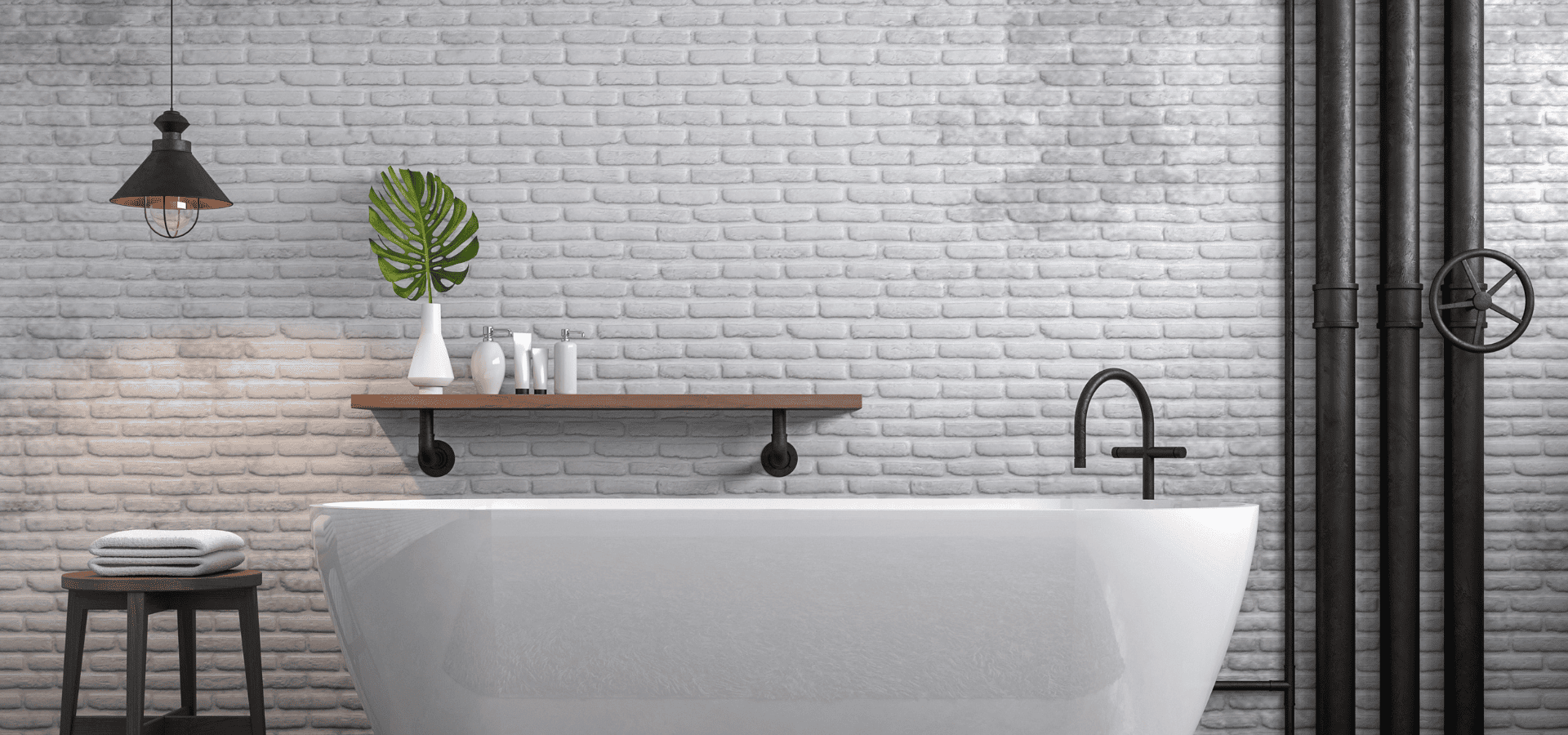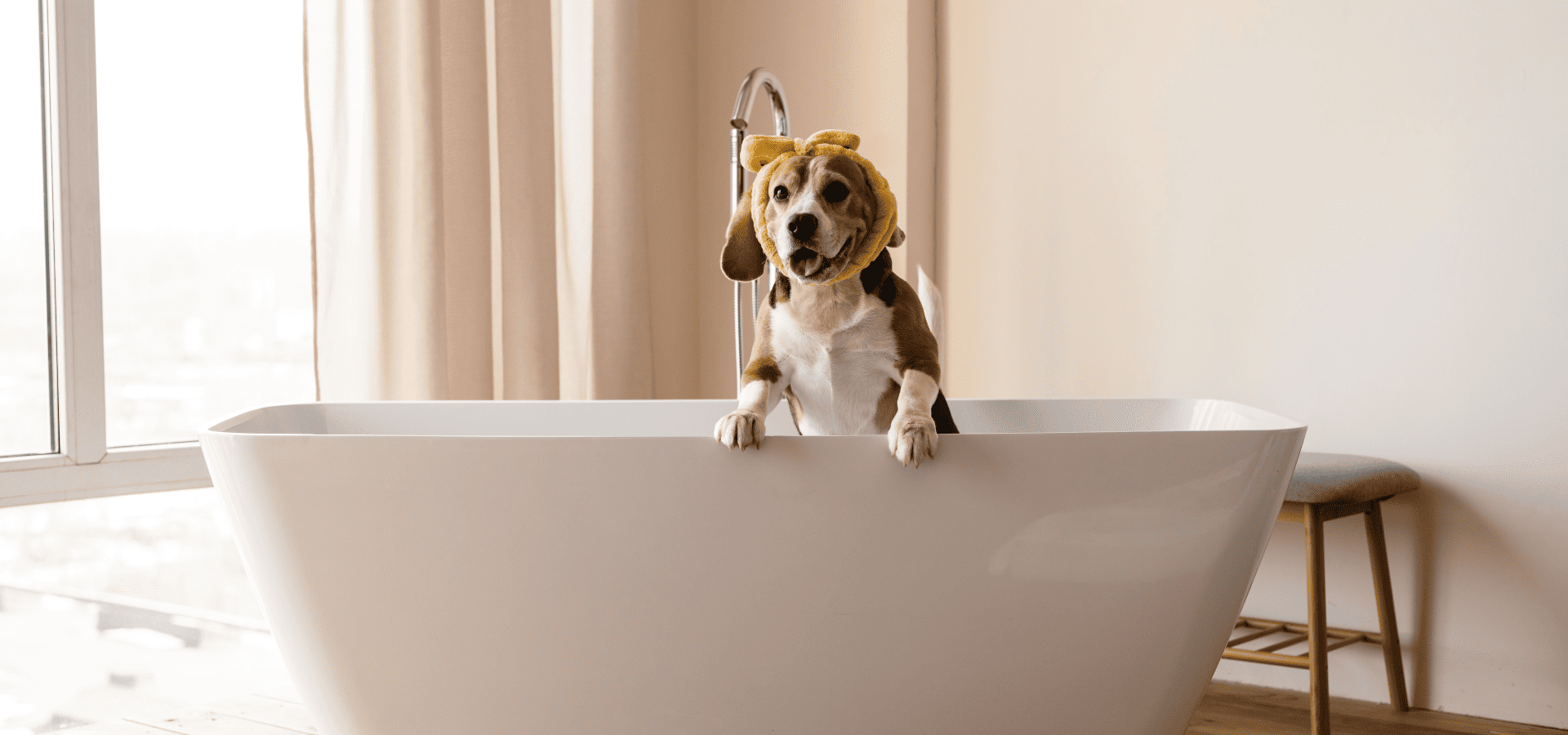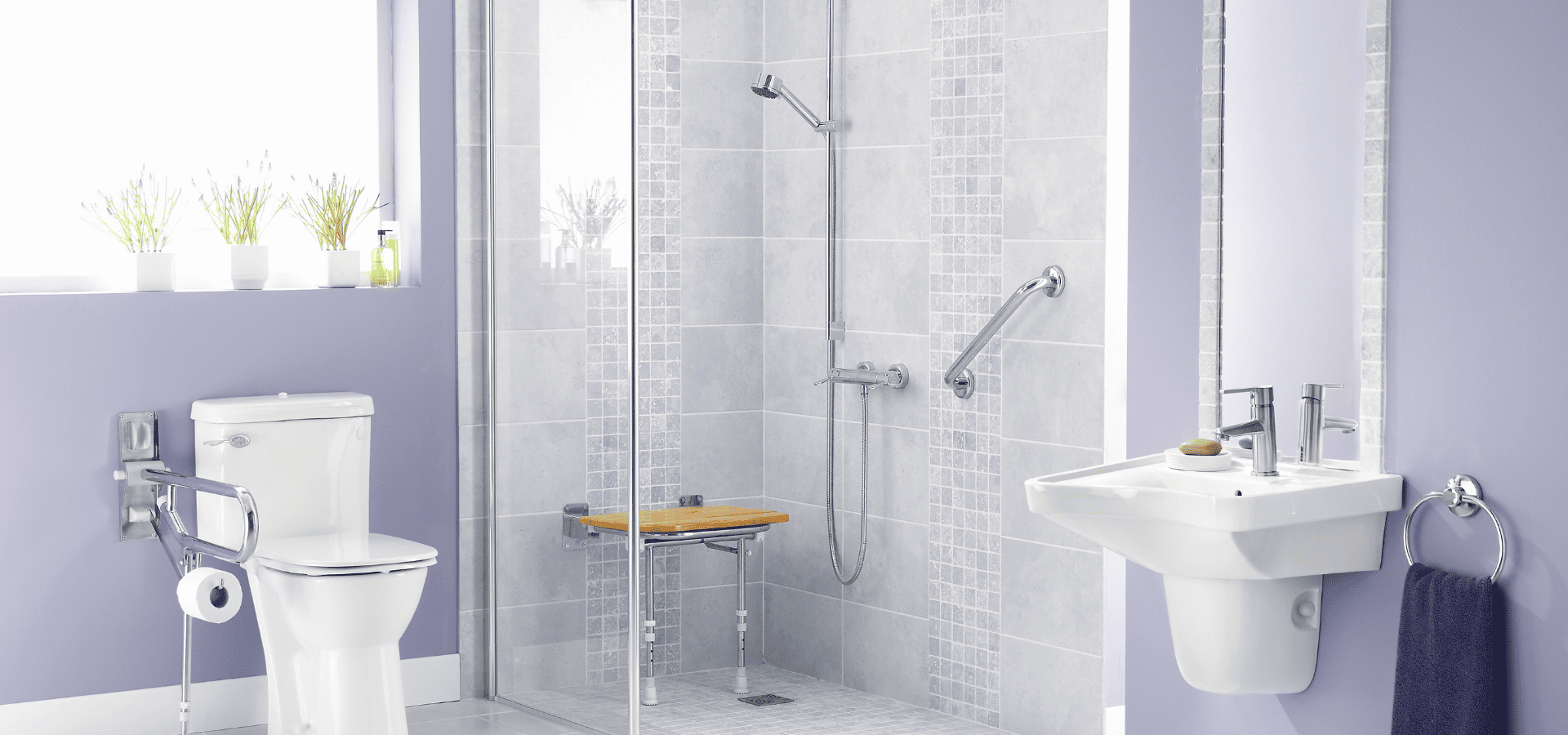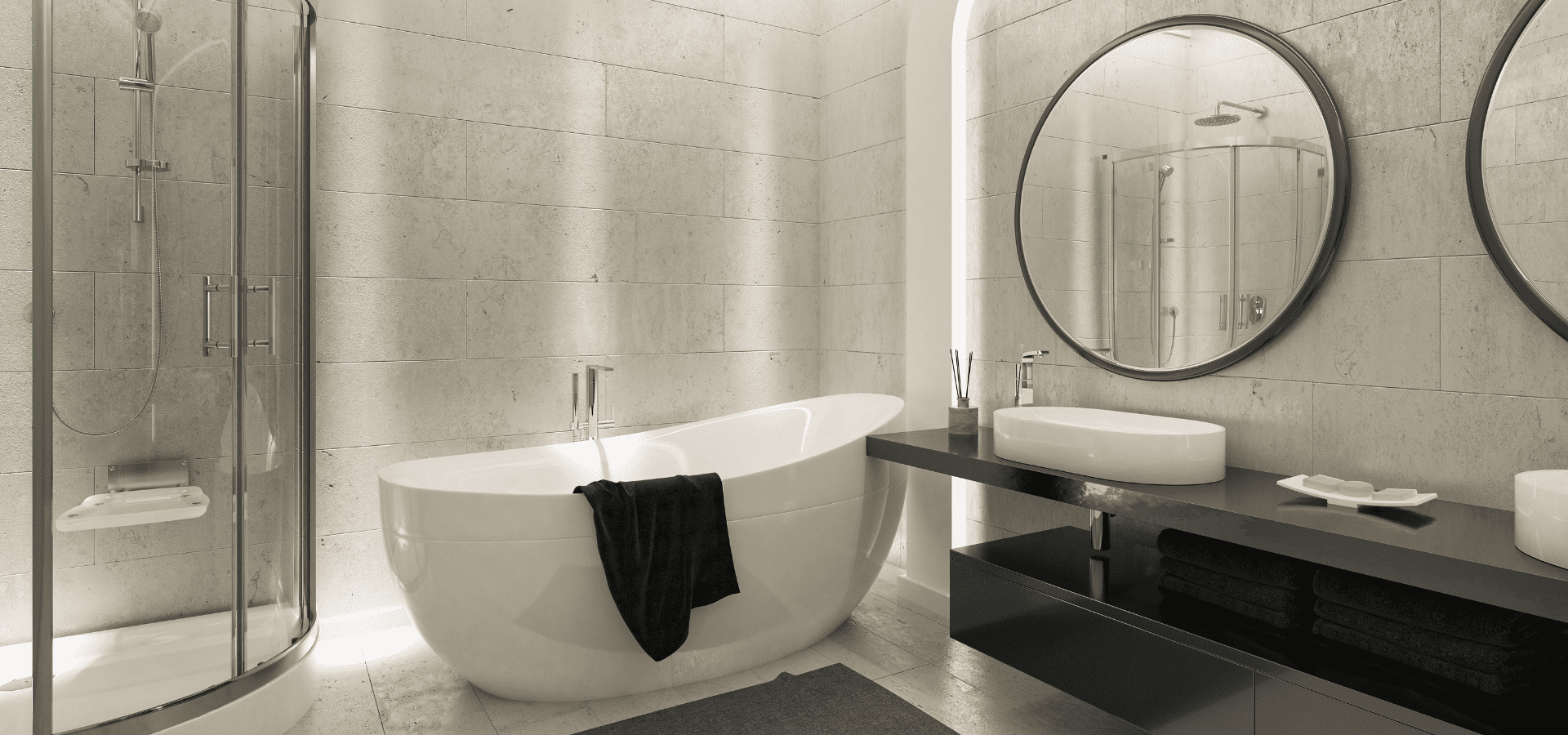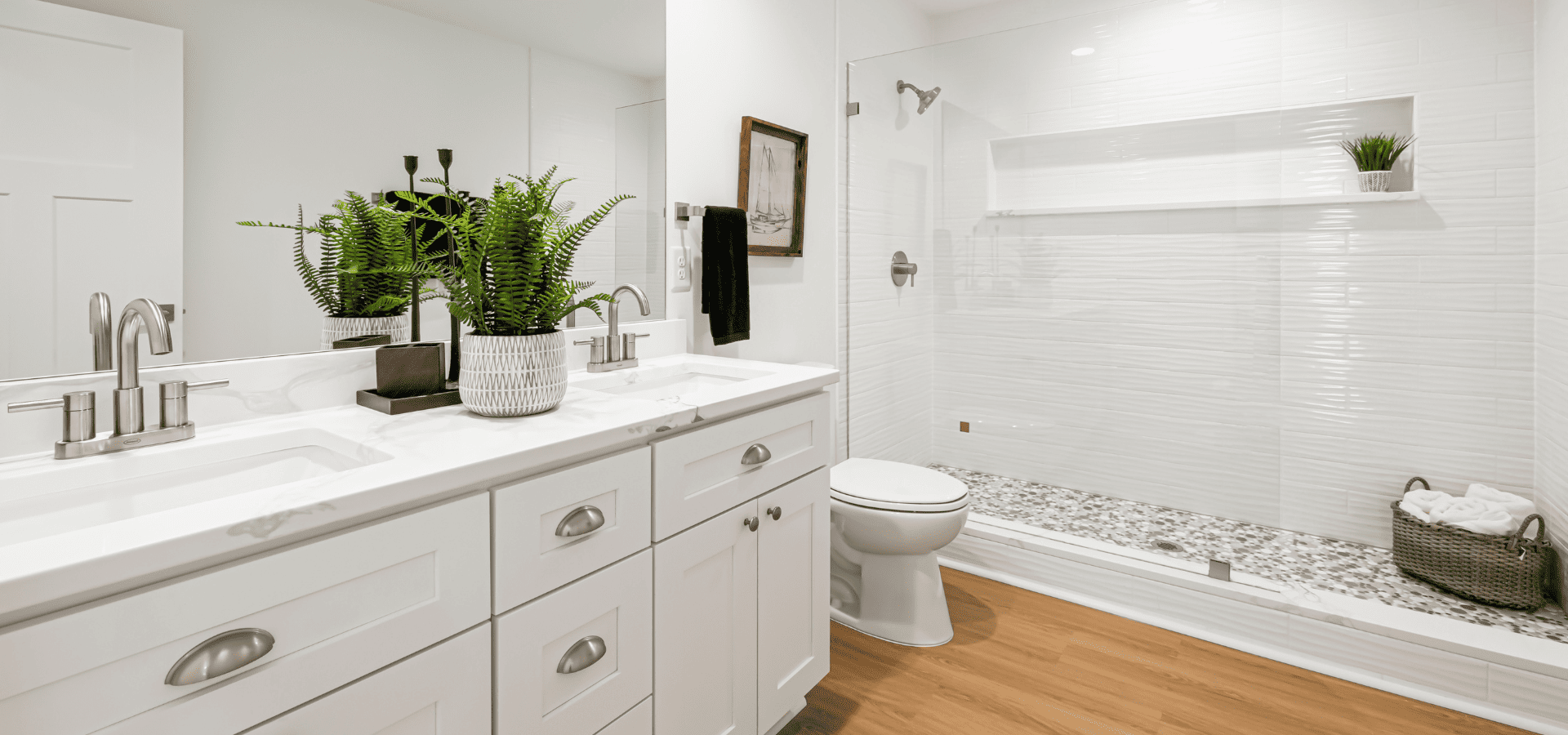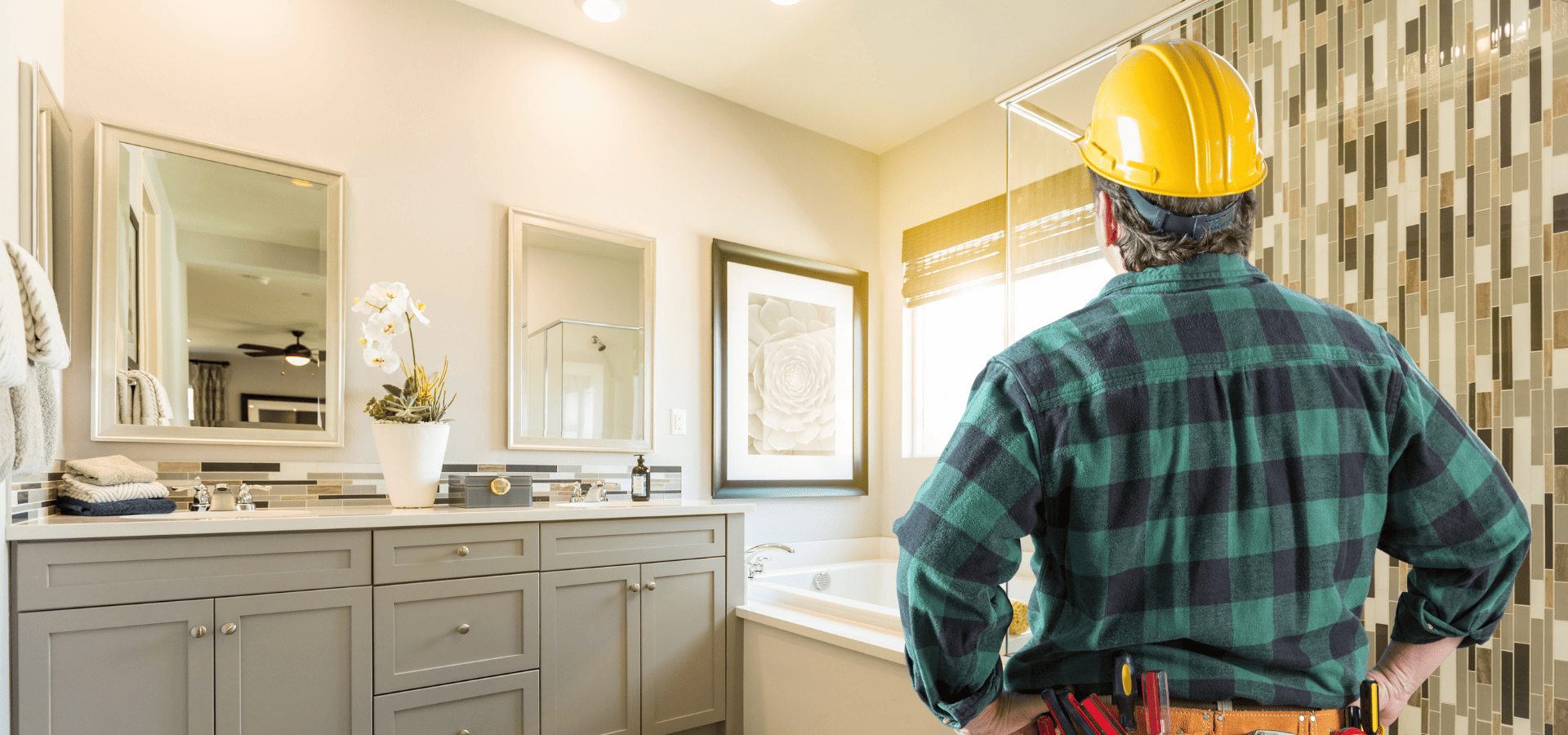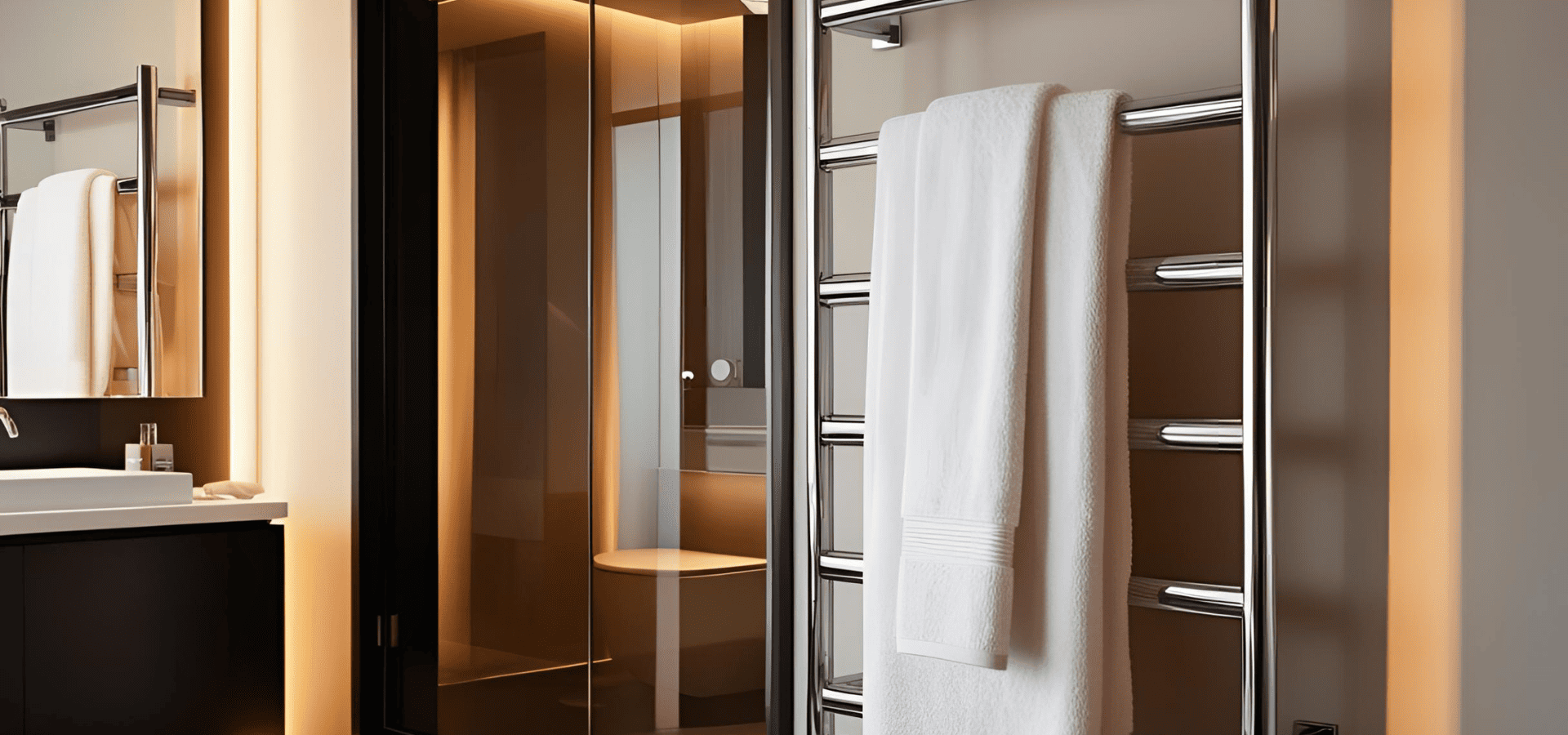Master Bathroom Remodeling Guide
There’s something quietly luxurious about a great master bathroom. It’s not just the soaking tub or the rainfall shower (though we’ll get there). No…
It’s the feel of it. The way the space moves with your routine instead of resisting it. The way it reflects your lifestyle without shouting for attention.
When a master bathroom is done right, you might barely feel the upgrade. But when it’s done wrong? You definitely feel it.
The cramped shower. The awkward vanity placement. That harsh lighting that somehow makes everything look... worse.
That’s where remodeling steps in! Done right, a master bath remodel isn’t just a vanity project (pun fully intended). A proper master bathroom remodel can seriously improve your day-to-day comfort, not to mention your home’s long-term value.
This guide walks you through what matters, what to expect, and how to get the most out of your remodel without spiraling into HGTV-fueled madness.
Let’s get you a smart, stylish upgrade that scratches all the right itches.
Why Remodel Your Master Bathroom?
Before we talk tile or fixtures or anything that glistens under good lighting, let’s zoom out.
A well-executed remodel solves problems. That’s its real job.
Yes, you want a bathroom that looks sharp. But form should follow function — and function means layouts that flow, lighting that works, plumbing that’s not on its last legs, and storage that isn’t an afterthought. After that, comfort upgrades like radiant floor heating and ventilation that doesn’t sound like a leaf blower also go a long way.
If you’re in Denver or similar markets, a functional, beautiful master bath is also a serious asset. Buyers expect modern design, sure, but also warmth, privacy, and flow. If your bathroom hasn’t been touched since dial-up internet, this isn’t a cosmetic touch-up.
It’s a quality-of-life level-up.
How Much Does A Master Bath Remodel Cost?
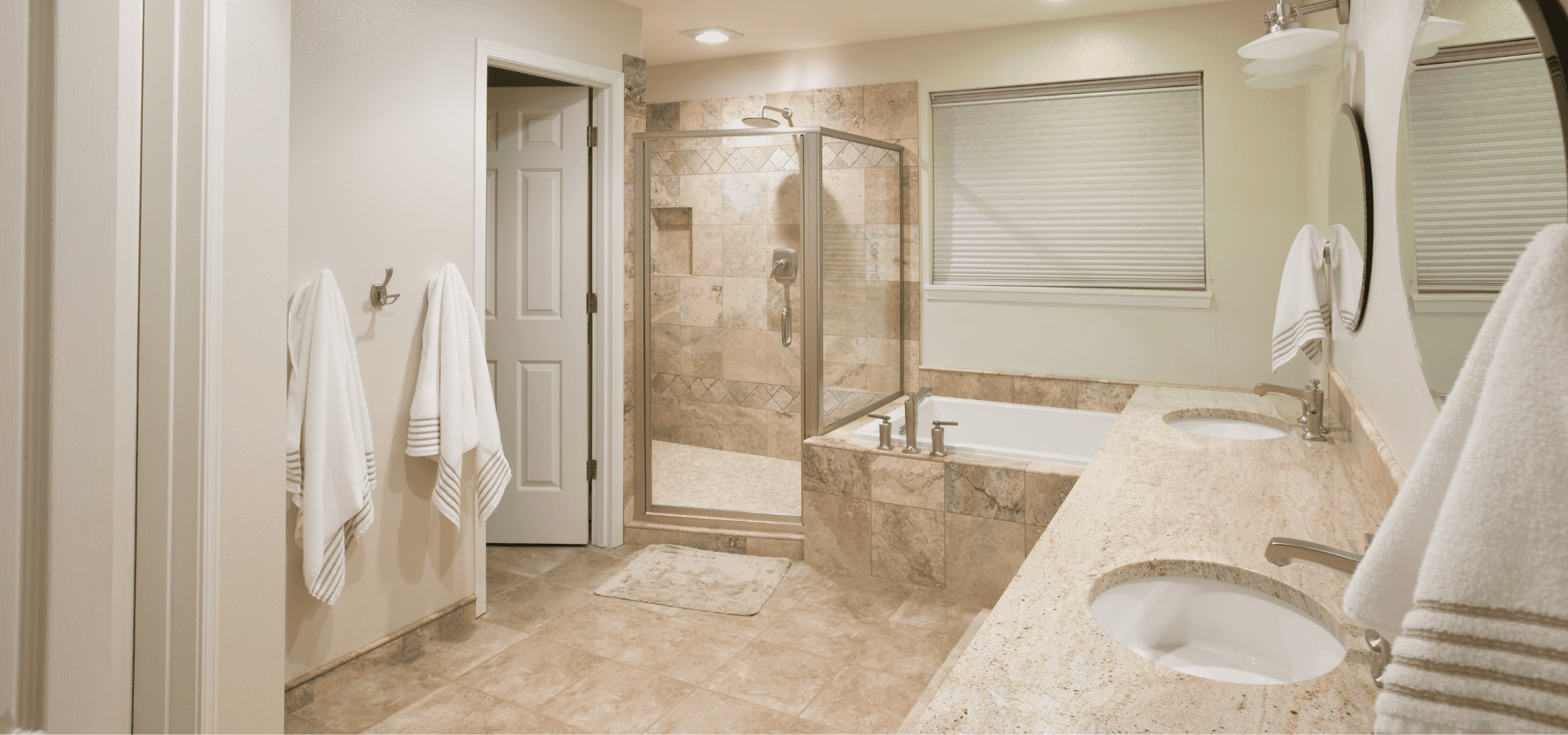
Short answer? It varies. Region, contractor, your style… so much affects this metric.
The longer answer? Using Denver as a benchmark, most midrange master bathroom remodels fall between $30,000–$60,000, depending on the finish level, scope, and whether you’re knocking down walls or just updating surfaces.
Here’s a rough range to keep your feet on the ground:
- Cosmetic Refresh: $15,000–$30,000
- Midrange Full Remodel: $35,000–$60,000
- High-End Overhaul: $60,000–$100,000+
Costs start climbing fast when you move plumbing, add luxury features (steam showers, radiant floors, soaking tubs), or reach for high-end finishes like natural stone and custom vanities. But value scales too. A great master bath can recoup 60–70% of its cost at resale…
And even more in daily satisfaction.
How Long Does It Take?
Most full master bath remodels take 4–8 weeks of construction. But when you factor in design, planning, and permitting, you’re often looking at 3–5 months total for the entire timeline.
Here’s the typical breakdown:
- Design & Planning: 2–6 weeks
- Permitting & Materials: 2–4 weeks
- Demo to Completion: 4–8 weeks
In places like Denver, permitting processes can also drag things out, especially for structural changes or older homes. Good contractors will bake this into the timeline so you’re not mid-demo with no clear end in sight.
(Oh, and, yeah… If it’s your main bathroom, you’ll need a temporary Plan B.)
Start With the Layout (Then Let It Evolve)
Layout is the backbone of your remodel. Without a smart layout, even the prettiest finishes won’t save a space that feels cramped, awkward, or just plain wrong.
Start by thinking through how you actually move through the space. Are you always colliding with your partner at the sink? Is the toilet awkwardly visible from the hallway? Could you trade a rarely-used tub for a walk-in shower that gets daily use?
Even if you’re not planning to move major plumbing, it’s worth bringing in a pro to explore your possibilities. Sometimes, a minor tweak in sink or drain placement opens up a dramatically better flow overall. And you definitely want to discover that before the tiling goes in.
Carpe diem: seize the opportunity! A lot of old bathroom layouts weren’t built for modern routines, so this is your chance to design for how you live now. It’s better than something designed for how someone else lived decades ago.
Prioritize The Features You’ll Actually Use
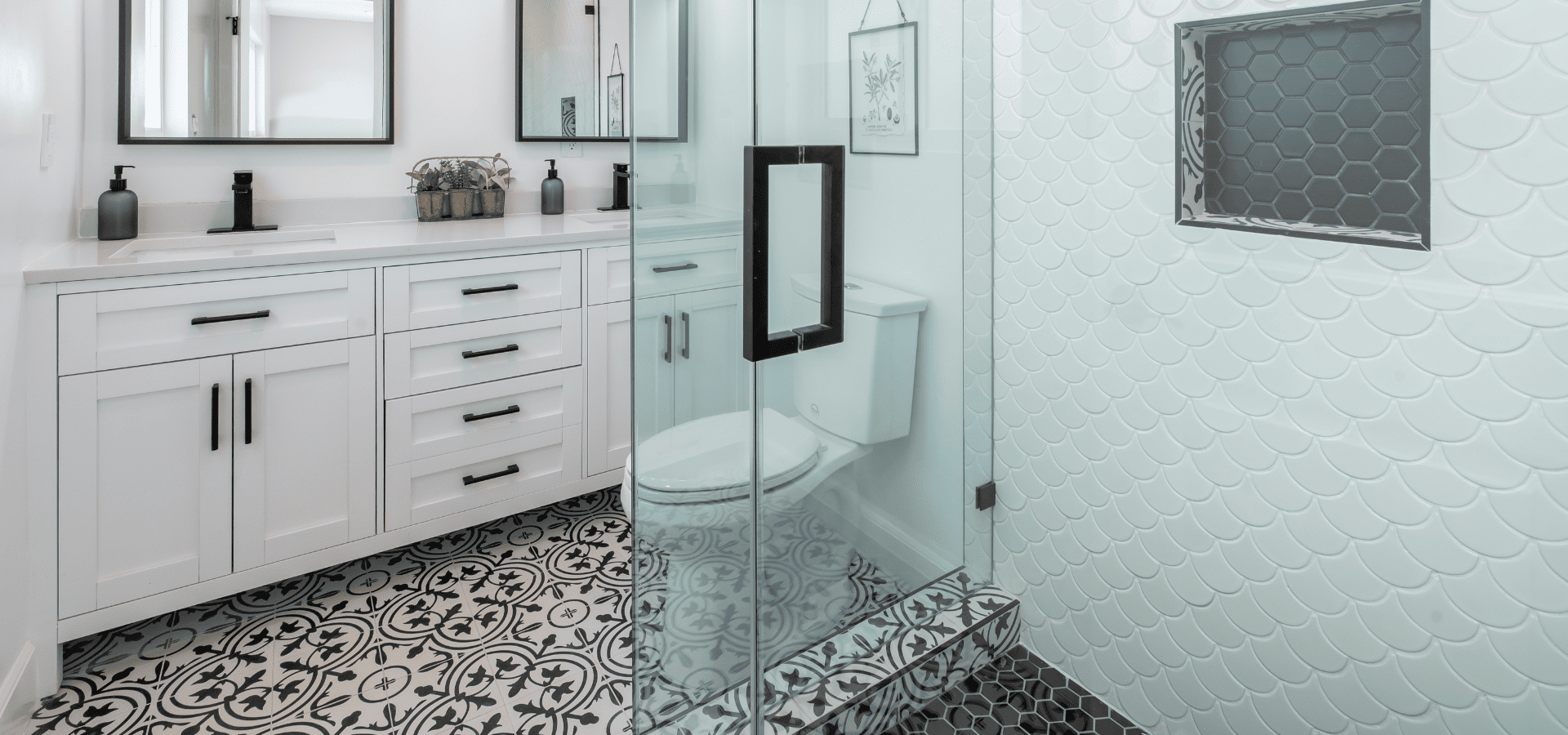
Not every Pinterest trend belongs in your bathroom. That jetted tub that takes 20 minutes to fill probably isn’t worth the plumbing upgrade, and a double shower when you live solo is cool in theory, but wasted space in practice.
Smart upgrades that tend to pull their weight in your day-to-day life:
- Walk-in showers with bench seating
- Dual vanities with actual storage (not just fancy cabinets)
- Radiant floor heating (especially in Denver’s colder months)
- Layered lighting — task, ambient, accent
- Built-in niches or ledges for daily-use storage
- Proper ventilation — for humidity control, not just fan noise
These less flashy systems, such as drainage, waterproofing, and slope, are what keep your bathroom functional for the next 20 years. Prioritize them! Style is great, but leaks are not.
Use Materials That Match Your Area
Let’s use Denver as an example again. This area is infamous for dry winters, wide temperature swings, and hard water, which doesn’t play nice with just any finish.
You want materials that hold up, particularly for regions with similarly tricky climates to manage. For example, smart choices for Denver bathrooms include:
- Porcelain tile: Durable, water-resistant, and low-maintenance
- Quartz countertops: No sealing needed, unlike marble or granite
- Pre-finished wood/composite vanities: They won’t warp in dry air
- Matte finishes: More forgiving with water spots
- Textured or slip-resistant flooring: Especially useful in wet zones
If you’re in Denver, natural stone is a great fit too. Denver’s climate can be rough on porous surfaces; porcelain lookalikes have come a long way, delivering timeless aesthetics with far less maintenance.
Conversely, if you’re not in Denver, do a similar level of localized research. It’s vital that your master bathroom is designed with materials equipped for your climate.
Lighting Is Not An Afterthought
You can get every finish right and still end up with a master bath that feels flat. Bad lighting dulls everything — literally.
One overhead light won’t cut it. A proper lighting plan for a well-illuminated master bathroom includes:
- Ambient lighting: Ceiling fixtures or dimmable recessed cans work great
- Task lighting: Try side sconces or mirrors with integrated LEDs
- Accent lighting: Use under-cabinet strips or toe-kick LEDs for mood
- Natural light: Skylights, frosted glass, or solar tubes complete the mood with natural options
A lot of older bathrooms were built like bunkers and miss out on natural lighting. Using a remodel opportunity to bring in more daylight without sacrificing privacy is a wonderful idea.
Then just throw dimmers in everywhere for extra nighttime comfort!
Plumbing, HVAC, And Electrical Upgrades
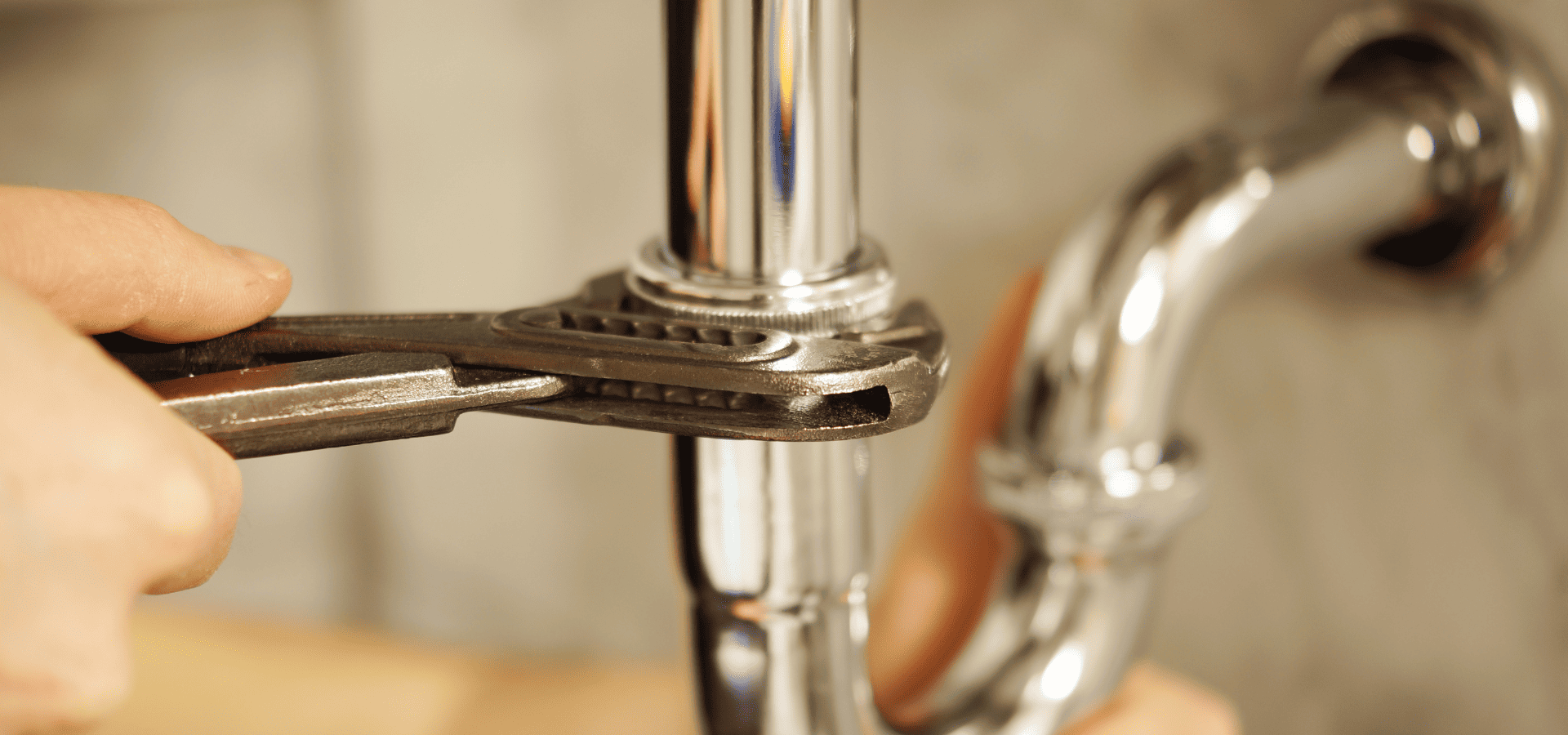
This is the stuff that hides behind the tiles. It’s what keeps everything working.
If you’re expanding the shower, adding a tub filler, or switching to dual vanities, you may need to upgrade your water lines or heater. Hair dryers, heated floors, and backlit mirrors can also overload older electrical panels if you’re not careful. Consider what kind of grooming and gadgets you actually use in your bathroom.
HVAC matters too. If your bathroom is always chilly or musty, it may need its own vent or even a dedicated heating zone. These aren’t glamorous upgrades, but they’re the difference between luxury and disappointment.
Don’t skip them.
Design Details That Go The Distance
Once the structure and systems are solid, the finer details are what pull everything together. This is where personal taste meets long-term thinking.
Attention-to-detail upgrades that tend to pay off include:
- Oversized shower tiles for cleaner lines with less grout
- Floating vanities are modern and usually easier to clean beneath
- Built-in linen towers provide smart storage near where you need it
- LED mirror lighting is great for skincare and aging eyes
- Bench seating is great in showers or dressing areas
- And heated towel racks are seriously underrated in the USA (though basically ubiquitous across Europe)
Skip trendy gimmicks like barn doors and vessel sinks. Fine details work best as clean lines and functional elegance that match the rest of your home.
Common Mistakes To Avoid
But even great designs can flop if execution is off! Here’s what you should definitely avoid in your remodel:
- Choosing trends over function
- Underestimating lead times for fixtures and materials
- Skimping on waterproofing or ventilation
- Focusing only on resale and ignoring livability
- DIYing trades that need pros (tile, plumbing, electrical)
- Buying cheap fixtures that wear out fast
The goal isn’t to spend big on everything. It’s to know where the money matters as well as where you can save without paying for it later.
Choosing The Right Contractor
Ahh, yes: the final ingredient. You can have the most beautiful plans in the world, but if the work’s not executed well, it all falls apart.
A good bathroom remodeling contractor doesn’t just follow instructions. They offer insights, flag issues early, and keep communication clear and timelines honest. In cities like Denver, that also means knowing the permitting landscape and HOA framework — and having the portfolio to back up the work.
Look for a team that feels collaborative, not just compliant. One that asks good questions and responds positively to your questions. They should respect your budget, never treat you like a nuisance, and see the project as a partnership.
Here's a complete guide to choosing the right Denver bathroom remodeling contractor if you need more guidance.
And if you’re local to Denver? Try Denver Bathroom Pros (yep, that’s us!); We know these homes, these quirks, and how to turn a tricky layout into something that works beautifully, every day.
Final Word: What Makes A Master Bathroom Remodel So Masterful?
A master bathroom remodel isn’t small. It’s time, money, and decisions. It’s a lot of decisions!
But when it all clicks? It’s transformative.
You end up with a space that’s part spa, part sanctuary. One that works hard for you in the morning and helps you unwind at night. In places where comfort is king and you experience the full brunt of the four seasons, that kind of upgrade delivers more than resale value.
It delivers peace of mind.
So, that’s what makes a master bathroom remodel so damn masterful! Designing a space that brings you contentment and peace of mind.
So plan thoughtfully. Choose materials that match your lifestyle and climate. And work with people who get it.
When all’s said and done, your master bath won’t just look good: it’ll also feel right.
Every single day, and then every one to come after that.
More From Us

